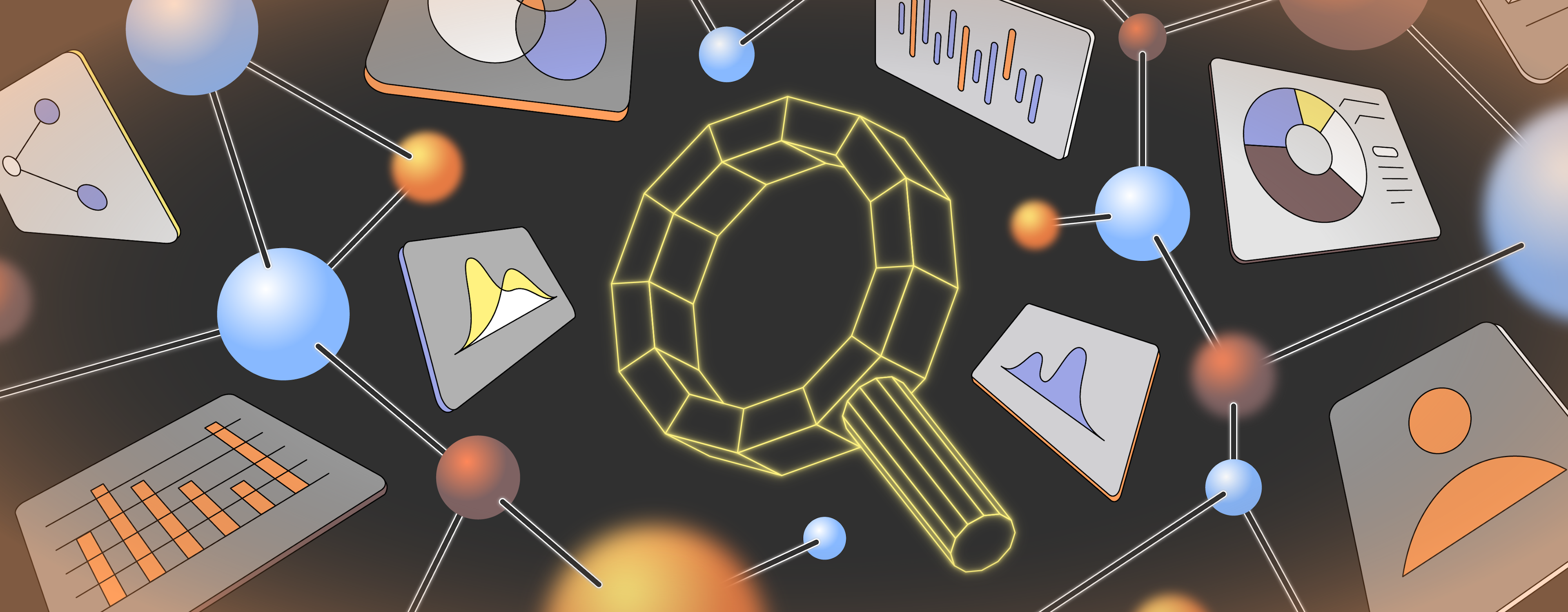Today, we’re launching Retool AI, a suite of features to build bespoke AI-powered tools for your business. Connect to any LLM provider, build apps and workflows visually or with code, and publish securely to your users—all in just a few minutes.
Early beta customers have built thousands of AI-powered apps and workflows using Retool AI—chatbots for support teams, sentiment analysis for product teams, content moderation workflows, ticket categorization and labeling, sales CRM automation, and much more. These features are now available to every Retool user. To get started, login or create a free account.
Like many companies, we had a lot of teams excited to put generative AI to work in their daily tasks. A few of our engineers stitched together open-source libraries, vector databases, and third-party LLMs to create apps and workflows that were then used by a majority of our sales and support teams. But it took weeks to get use cases into production, and most of these internal tools lacked continuous updates as engineers went back to work on other projects.
To move faster, we tried off-the-shelf AI products focused on sales and support use cases, but they weren’t flexible enough. For example, many support bot products could read our public docs, but couldn’t ingest text from more custom sources (like Confluence or Slack) or connect to our data warehouse. On top of that, we couldn’t iterate by testing dynamic prompts, swapping in different LLMs, or adding business logic.
We were stuck. Building bespoke in-house AI tooling just took too long and was expensive to update and maintain. Off-the-shelf tooling wasn’t flexible enough to meet our needs.
So like any good software team, we decided to scratch our own itch. We set out to put the AI building blocks we wished we had right into Retool, so we could combine the speed of an off-the-shelf solution with the customization of bespoke tooling. With the new features in Retool AI, you can iterate quickly on any AI app or workflow, leverage different LLMs, connect to third-party databases and APIs, and write custom business logic and prompts safely and securely.
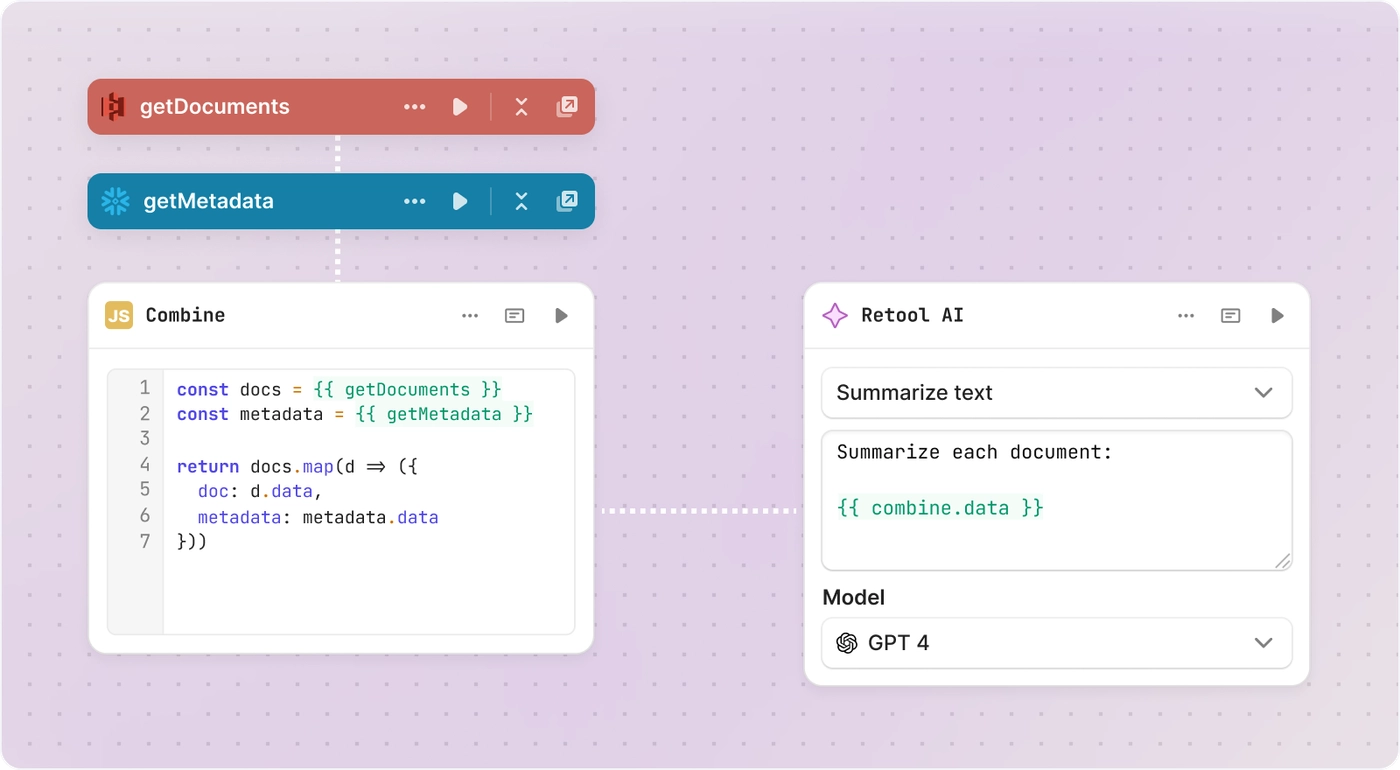
Engineering teams can build out use cases in minutes or hours with Retool AI, and technical sales and support team members can iterate on them to improve the quality over time.
Let’s say you want to build “ChatGPT for your business”—a support bot that knows specific information about your company, from internal wikis to documents to private Slack channels. It should be consumable internally as an app, or externally as an API for third-party tools like Intercom or Zendesk.
To build this in Retool, you can get started with Retool Vectors, a managed vector store for embeddings that abstracts away the complexity of ingesting, chunking, and parsing text. Upload text from any website, document, or third-party SaaS tool like Slack or Confluence, and your embeddings are instantly created.
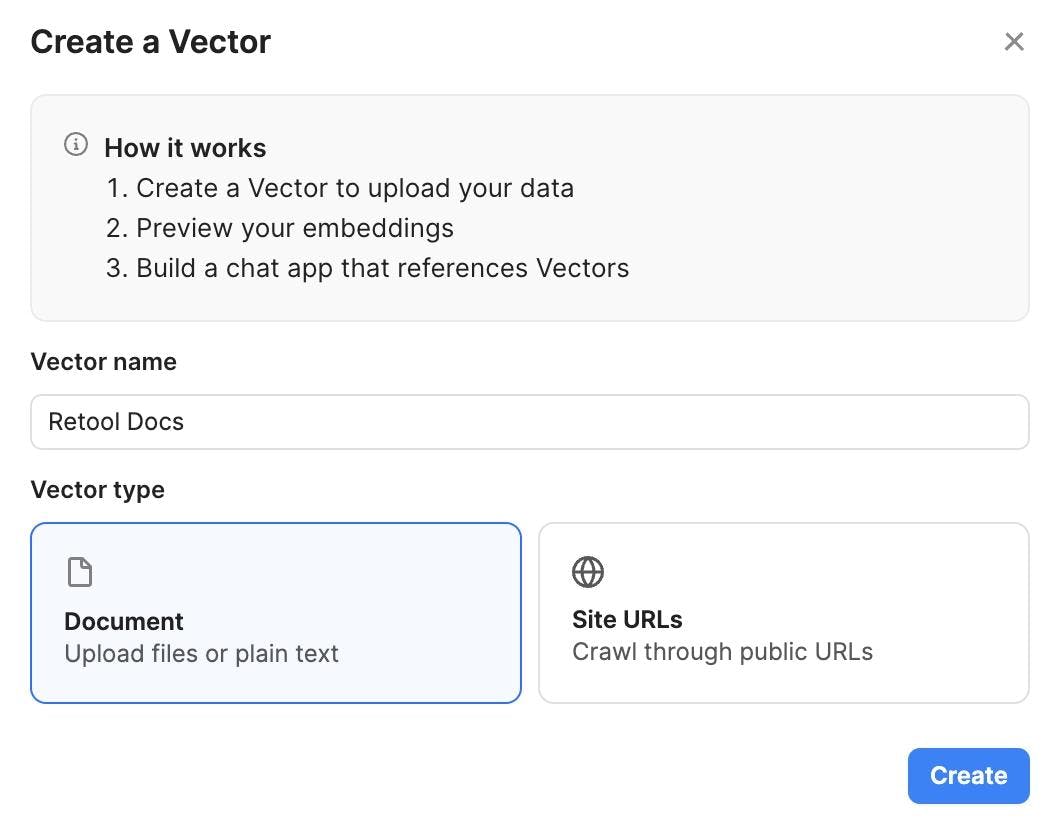
Now that you have the “brain” of your support bot in Retool Vectors, you can create a new app using Retool's built-in component library. Simply drag out a chat component to start using AI Actions—pre-built blocks that interact with LLMs:
- Select from a menu of AI Actions (e.g., summarize text, extract entities, generate chat response, and more), or create your own prompt
- Pick your model (e.g., GPT-4, GPT 3.5, Claude, Azure, etc.)
- Feed your business data to the prompt
You can connect AI Actions to Retool Vectors so your chat app knows about all the company-specific information you uploaded into the vector store.
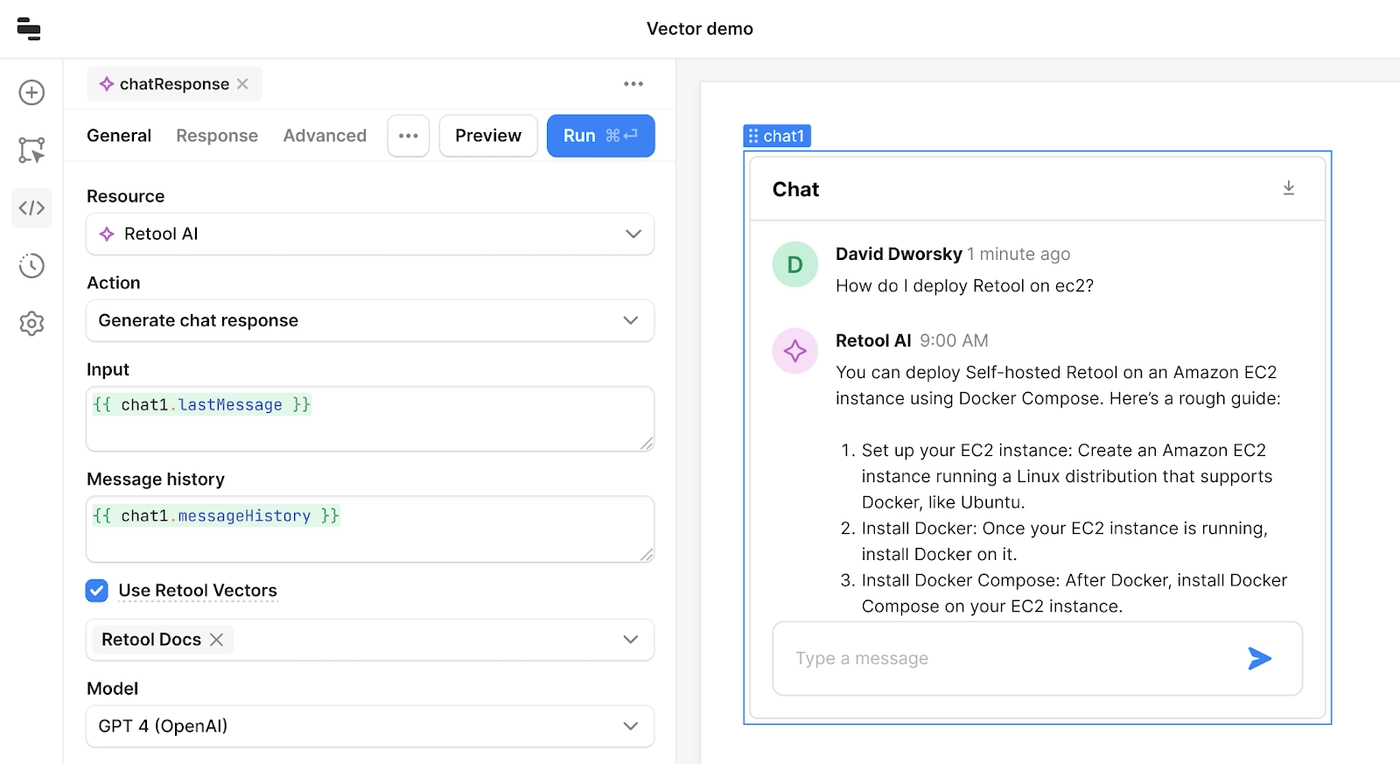
We’ll be adding more AI Actions and model providers over the coming months, and you can use our REST API connector if we don’t yet support the model provider you’re looking for. (Some of our customers connect Retool to Llama 2 via the REST API connector, for example.)
Next, you’ll want to expose your AI app as an API so it can integrate with tools like Intercom or Zendesk and actually respond to customers. Head over to Retool Workflows, Retool’s backend automation engine, where you can create an API that takes in a customer’s question from your support software, performs arbitrary business logic and prompt construction, and responds with the relevant answer.
For example, we could check if the user is on a paid plan, and if so, trigger an AI Action that uses Retool Vectors to answer the user’s question. If they’re a free user, we respond with a message to upgrade. Because this workflow is exposed as an API, the message can appear directly in Intercom or Zendesk.
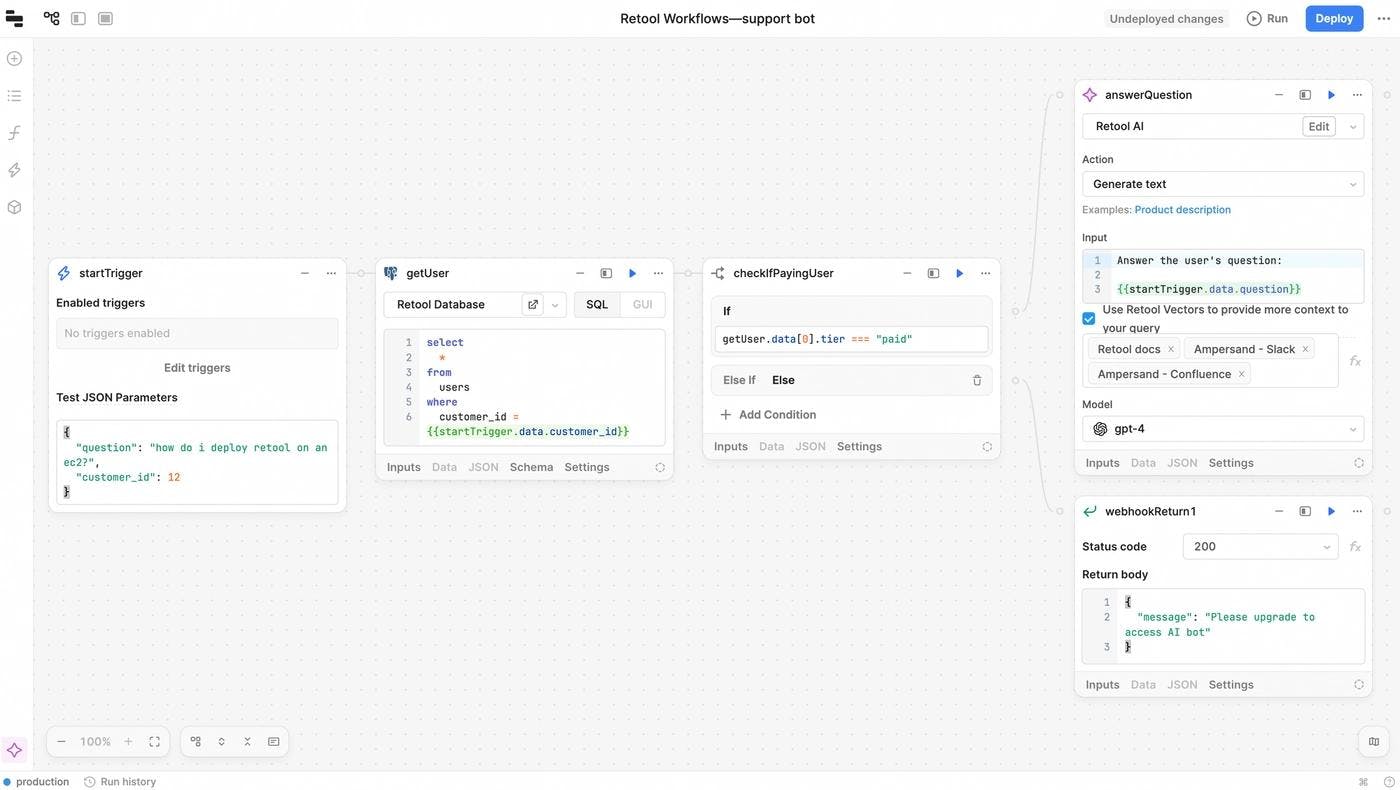
In just a few minutes, we’ve created a support bot that knows about specific company information with guardrails to ensure data stays protected. We can expose all of the vectors internally in the chat app, and choose which ones get exposed externally via the API.
You can start using Retool AI right now with our OpenAI API key—no setup required. We recommend entering your own key for production use cases.
We’ve also introduced features to enhance your everyday building experience in Retool, regardless of what you’re building. Ask AI is a coding assistant that helps you create applications faster by generating SQL or JavaScript that’s aware of the app’s context. Instead of remembering the names of specific tables in your database, for example, just write a question to generate an SQL query with the table names auto-populated. While ChatGPT is great at writing code, Ask AI builds upon it to write code that “just works” in Retool because it knows about all of the components and data sources that make up your apps.
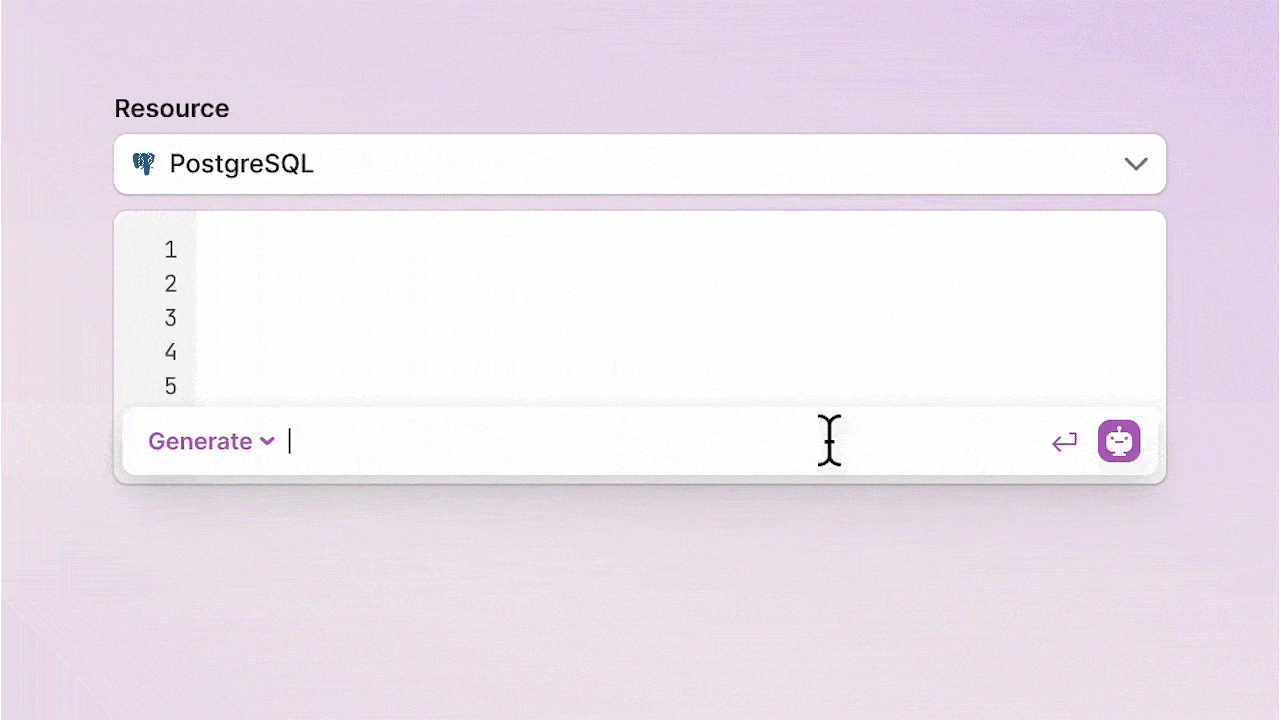
Securely deploy AI apps and workflows. Balancing data access and security is a challenge when building with LLMs. By default, Retool comes with granular permissions and security features like SSO, audit logging, version control, and usage analytics. You can also self-host Retool in your network, and use open-source LLMs like Llama2. (If you’re interested in using open-source LLMs with Retool, please reach out to me at dworsky@retool.com.)
Support bots just touch the surface of what you can build with Retool AI. Here's what some early customers have built so far:
- Sales outreach automation: CommandBar generates personalized outbound messages for their sales team. “Retool AI saves our sales team hours of work each week by automating their outreach,” says their CEO, James Evans.
- Automating operational tasks: Rappid automates tasks like categorizing client tickets and summarizing meeting notes. “My team saves time to focus on delivering better solutions for our clients instead of managing processes,” says managing director, Zach Chaitman.
- Triaging requests: Notable has automated their process of triaging client requests by summarizing and categorizing client emails into tickets that are written back into their task management software. Eric Cogan, a Product Manager who built this automation, says, “Retool reduces hours of manual work for our team.”
- Summarizing product feedback: Gaiia created a dashboard in Retool that gives eng and product teams a central place to see generated summaries of support tickets. Dany Bouchard, the sole person who built this dashboard, says, “We’re able to understand how our customer needs evolve.”
- AI-powered user experiences: Oyen created a lead generation web app that delivers custom AI-generated travel itineraries to users. The backend was automated with Retool by sending prompts and user inputs to GPT-4. Pang Jo Fan, the Head of Product who built this from end-to-end, says, “This runs on autopilot, generating more leads than we expected.”
From auto-generating charts to summarizing field reports, there's plenty more you can build with Retool AI—check out some example apps to get inspired.
The entire suite of features in Retool AI is now available to all Retool users. Cloud customers can access the features as soon as you log in. Self-hosted customers will be able to opt-in to access Retool AI features in the next release—v3.14. Read the docs to learn more.
If you’re new to Retool, create a free account, or book a demo to get started.
Want to learn more about how to build AI apps and workflows? Join our upcoming build session to see us build three AI-powered apps including the support bot.



